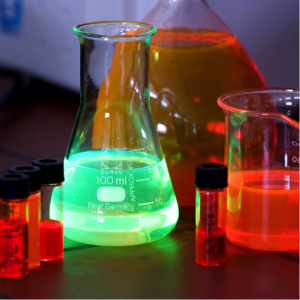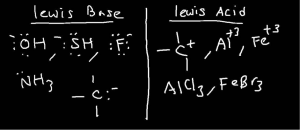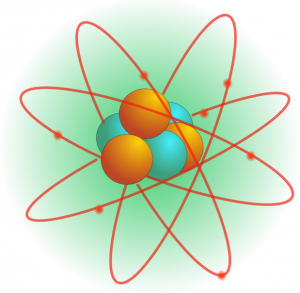Understanding The A Level Chemistry Landscape
Do you find, for example, it could be a simple form of watching chemistry-related videos in order to understand the subject. When students opt for online tuition classes for A-Level Chemistry, there are various tools that could be used. For example – analogies is one of the most useful tools to help students understand each chemistry concept. When you’re a JC student any subject would be intimidating at first. However, once a student follows the process of familiarising themselves with the concepts one at a time, they often overcome the preconceived notion. Those students who study with an open mind using various other tactics and methods, often find themselves more interested and keen on learning chemistry. This ultimately results in them scoring distinctions. A-Level chemistry examination is very different from what the O level chemistry examination was based on. For all students sitting for their A-Level chemistry examination are expected to study more topics, and gain more content in a detailed manner. However, if you as a student find that studying for your upcoming chemistry exams are a struggle, you needn’t worry as there is plenty of ways to help you pass your exam.
Tips For A Level Chemistry Examinations
These tips highlight some common mistakes made by thousands of students. They are collected under various subheadings to help you when you revise a particular topic.General Tips For PAPER 1
– Some questions may ask you to choose a combination of things in order to select the correct answer – understand exactly what is required before you start to answer. – Within a single question, use a pencil to cross out the choices that are clearly incorrect, then choose between the othersGeneral Tips For Papers 2, 3, 5 AND 6
Read the question correctly. For example, if the question says ‘give two observations apart from temperature change’, don’t include temperature change in your answer. Check for contradictions within your answer. For example, a common error is to write ‘a white insoluble precipitate dissolves’ (6.5(a)(i)) Show any workings In any calculation, the final answer should be to the correct number of significant figures – generally the same as the data. You may be penalized if you write an excess number of significant figures e.g. 1.257487 instead of 1.26 Know your syllabus statements and definitions exactly – use the Revision Checklist on the website. Don’t add your own ideas to the statements. For example, the syllabus statement on batteries says ‘they are portable’, meaning they can be easily carried around: an answer such as ‘they are small’ may not be accepted, as something can be small yet heavy (3.1(a))If asked to ‘describe what you would observe’, write down what you see, hear or feel (e.g. ‘the test tube gets hot’). A common mistake is to write something like ‘a gas is given off’ or ‘copper is deposited’; these are not observations, these are conclusions
If asked to ‘describe what you would see’, don’t note observations about sounds or temperature
Learn your definitions! Questions such as “what is a compound?” or “Define the mole.” are often poorly answered. Define does not mean ‘give an example of.’
When asked to give examples, give the number requested by the examiner. For example, if asked to give two examples, do not give three – if one is incorrect, you may lose a mark. If a question asks for a single use for a substance don’t write a list – the examiner will think you are ‘playing safe’ and you won’t get the mark (2.5(d)) If you have to tick boxes to answer a question, make sure that you tick the correct number – don’t assume that a single answer is always required (2.5(ft) In chemistry, when plotting a graph of reaction rate, you must draw a curve of best fit through your prints. Lines drawn with a ruler from point to point will not get a mark. Look out for ‘hidden words’ in questions such as ‘which of the following is a gas containing diatomic molecules?’ Many students focus on one or two words, and might forget ‘gas’. Underline key words and read the question slowly (2.1(e)(i)) Avoid vague statements. For example, if the question asks about the use of graphite, the answer ‘graphite is used for electrodes in electrolysis’ is appropriately specific. ‘Graphite is used in electrolysis,’ is too vague (2.1(d)(ii)) When drawing diagrams: Make sure they fill the space given on the paper and are LABELLED When drawing apparatus for gas measurement, make sure that the gas cannot escape. For example, don’t draw a gas syringe with the plunger much smaller than the syringe barrel – this is a common error.General Tips On Topics For Papers 1, 2 & 3

Acids and bases
Don’t confuse the pH scale with the degree of acidity. The more acidic the substance, the lower the pH – learn this by remembering that ‘a’ (for acid) is the lowest numbered letter of the alphabet (1.30) A common error is to think that less sodium hydroxide is needed to neutralise a weak acid than to neutralise a strong acid of the same concentration. The same amount is needed because the hydroxide is reacting with all the acidic hydrogens in the molecule, not just those that have ionised (3.6(b)(ii)) The phrase ‘explain why this acid is acting as a base’ demands a chemical reason (usually based on particle theory). The examiner is looking for an answer involving proton transfer. Vague answers (such as ‘it is neutralising the base’) are not accepted as they do not give an explanation (3.2(b)(iv)) Simple inorganic salts such as sodium chloride are generally neutral when dissolved in water – they are not acidic (1.3) Nitric acid is a strong, not a weak, acid (6.7(c))Air and water
To remember that carbon monoxide is poisonous (it binds to haemoglobin), think of the ‘nox’ in carbon monoxide as being short for noxious (poisonous). The effects of pollutant gases on nature are often confused, as not all pollutant gases are acidic. Know the different effects of carbon monoxide, sulphur dioxide and carbon dioxide (1.31) A common error is to think that fume cupboards keep air away from a reaction. Fume cupboards have a continuous airflow to allow poisonous vapours to escape through the fan (6.3(d))
